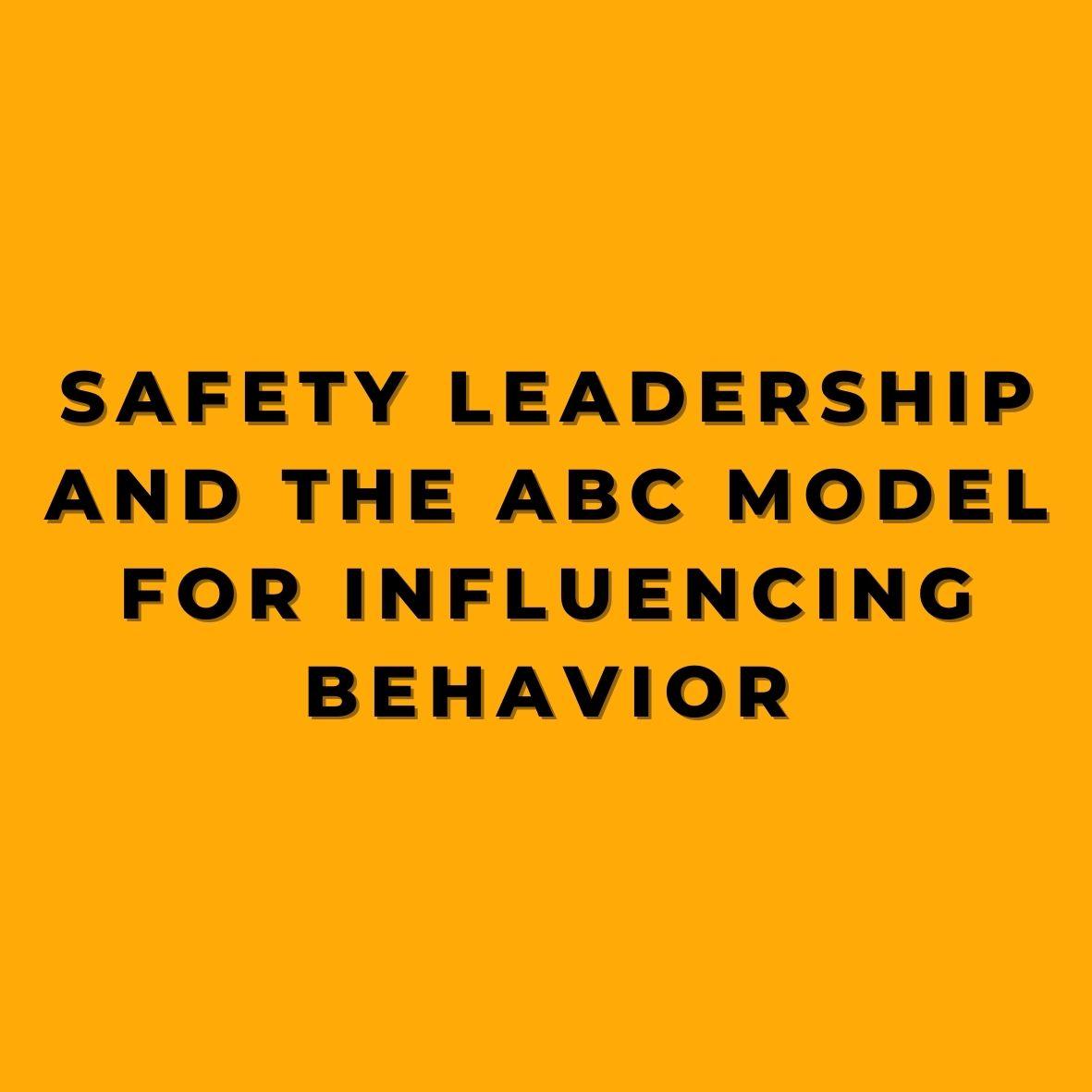One of the most effective ways to do this is through the use of the ABC model for influencing behavior. The ABC model is a simple yet powerful tool for understanding and influencing behavior in the workplace. It stands for Antecedent, Behavior, and Consequence, and it can be used to identify and change unsafe behaviors. By understanding the ABC model, you can create a safer work environment and promote safety leadership.
- Antecedent: Identifying the antecedent of unsafe behaviors is crucial in understanding why they’re happening and taking steps to change them. Antecedents can include a variety of factors such as the physical environment, organizational culture, or individual attitudes and beliefs. By identifying the antecedents, you can take a targeted approach to changing the behavior. For example, if an employee is not wearing their personal protective equipment because it’s uncomfortable, you can provide them with more comfortable equipment. Or if an employee is not following a specific safety procedure because they don’t understand it, you can provide additional training. By addressing the antecedent, you can prevent the unsafe behavior from happening in the first place.
- Behavior: Identifying the specific behavior that needs to be changed is the next step in the ABC model. This is the action or inaction that is occurring and causing concern. It’s important to be specific and avoid generalizations when identifying the behavior. For example, instead of saying “employees aren’t following safety procedures,” specify which procedures are not being followed and by whom. By identifying the specific behavior, you can focus on changing it and measure progress.
- Consequence: Identifying the consequences of unsafe behaviors is crucial in understanding the impact they have on the individual, the organization and the environment. Consequences can range from minor injuries to fatalities, and they can have a significant impact on the business. By identifying the consequences, you can understand the importance of changing the behavior and the urgency of taking action. It can also help in creating a sense of accountability, by showing the employees the direct result of their actions, you are making them more aware of their responsibilities.
- Change the antecedent: Changing the antecedent is a key step in the ABC model and can be a highly effective way to change behavior. By addressing the underlying factors that are causing the unsafe behavior, you can prevent it from happening in the first place. For example, if an employee is not wearing their personal protective equipment because it’s uncomfortable, you can provide them with more comfortable equipment. Or if an employee is not following a specific safety procedure because they don’t understand it, you can provide additional training. By changing the antecedent, you can change the behavior in a sustainable way.
- Create positive consequences: Creating positive consequences for safe behaviors can be a powerful way to change behavior. Positive consequences can include things like recognition, rewards, or bonuses. By creating positive consequences for safe behaviors, you can encourage employees to adopt safe behaviors and make safety a priority. For example, if an employee consistently wears their personal protective equipment, they can be recognized and rewarded for their actions. This not only encourages the employee but also sets an example for their colleagues.
- Train your employees: Training your employees on the ABC model and how it can be used to promote safety in the workplace is important. By providing them with the tools and knowledge they need, they can take responsibility for their own safety and the safety of their colleagues. Training should include information on the ABC model, how to identify unsafe behaviors, and how to change them. Additionally, training should also include information on specific safety procedures and the use of personal protective equipment.
- Lead by example: As a safety leader, it’s important to lead by example. By consistently modeling safe behaviors, you can set the standard for safety in the workplace. Employees will be more likely to adopt safe behaviors if they see their leaders doing so. Additionally, it is important to hold yourself accountable and take responsibility for the safety of the team, this will set a good example and create a culture of safety.
- Continuously evaluate: Continuously evaluate and monitor the effectiveness of the ABC model in the workplace is important to ensure that it’s working effectively. This includes identifying new hazards, assessing existing hazards, and adjusting the ABC model as necessary. Regularly monitoring the progress of the behavior change can help to identify if there are any issues or gaps in the process, this can help to make necessary adjustments to the ABC model. This also allows for the identification of new hazards, which can be addressed before they become a problem. By continuously evaluating and monitoring the effectiveness of the ABC model, you can ensure that the safety of your employees is always a top priority.
In conclusion, the ABC model is a powerful tool for influencing behavior in the workplace. By understanding the antecedent, behavior, and consequence of unsafe behaviors, you can create a safer work environment and promote safety leadership. By changing the antecedent, creating positive consequences, training your employees, leading by example and continuously evaluating and monitoring the effectiveness, you can ensure that the ABC model is working effectively in your workplace. Remember, safety is the top priority and by promoting it and leading by example, you can create a culture of safety in the workplace.










